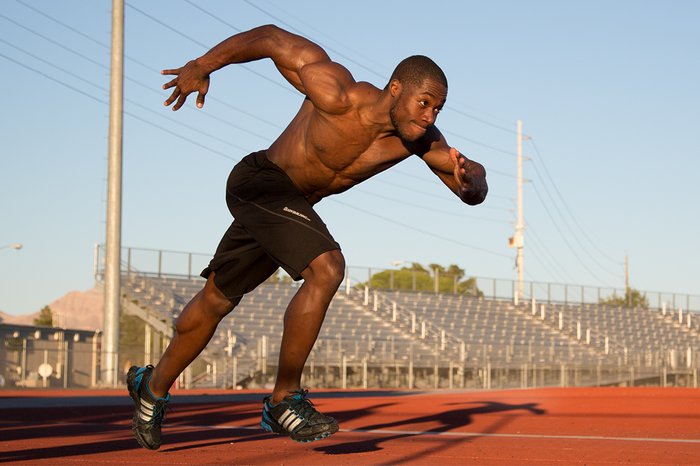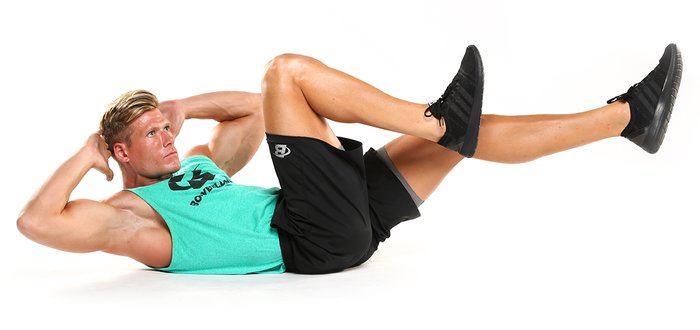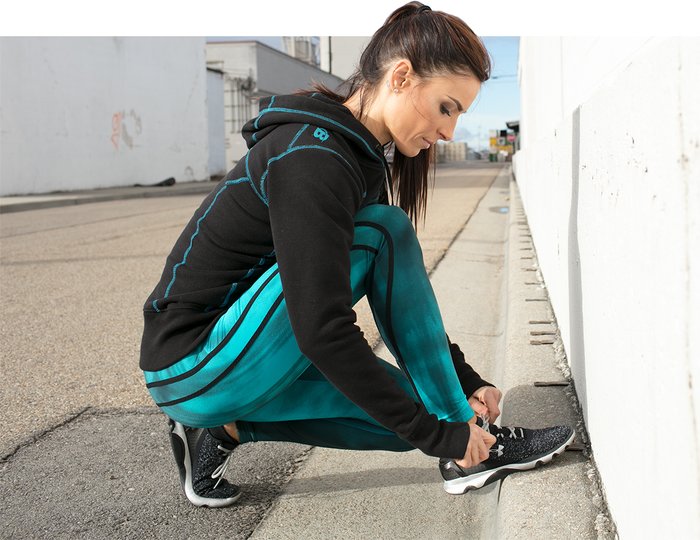As a new runner, you might feel like you have a lot of catching up to do just to hold your own. But you have a key advantage: You haven't had time to develop bad habits. Ever notice how runners constantly complain of being injured? Yeah, it's not from the running. It's from bad running habits. Ingrain good ones from the starting line, and you can circumvent a whole lot of pain and suffering. Read these tips, implement them, and prepare to lace up!
Bad Habit 1: Starting Too Quickly
As with lifting, when you run, your muscles, joints, and ligaments need a chance to warm up and get the blood flowing before you're ready to crush your workout. A warm-up signals your body to release energy and contract your muscles so you're physiologically ready to work hard. Always start with a dynamic warm-up, then walk, and finally jog for a little while when you first start out. Increase your speed gradually.

This rule applies to your training runs and races, but also to your running program as a whole. Speed work is running's version of one-rep-max sets: It makes you stronger, but it's hard on the body and you need to prepare for it. If you're new to running, spend a few weeks going on easy jogs before you introduce any kind of speed work. This will build the strength and resilience you need to work harder.
Bad Habit 2: Skipping Core Work
Core work is another concept that's as important for running as it is for bodybuilding. When you have a strong core, you'll be able to stabilize your body to achieve greater power and minimize your risk of injury. A strong core also keeps your running form tight, which means you'll move more efficiently and be able to go farther and faster with less effort. A study in The Journal of Strength and Conditioning Research found that people who did core exercises four times a week for six weeks ran a 5K 30 seconds faster than those who didn't.[1]
I'm all for anything that makes running a little easier, but doing a bunch of planks isn't always enough. There's a difference between being able to consciously brace your core during movement and having reflexive core stability. The latter allows your core to stabilize subconsciously while the rest of your body is moving, such as during running. As a bonus, it will also help lessen your injury risk in the gym and during everyday movements, like lifting heavy stuff.

Bad Habit 3: Wearing Bad Shoes
If you're new to running and feeling pain, the first place to look is down at your feet. What kind of shoes are you wearing? Are they lightweight, flexible training shoes? Have you had them for a really long time and do you wear them for other activities? Try bending and twisting the shoe. If the sole flexes too easily, you might need more support.
Inadequate support can lead to foot pain and even injury. Some people with incredibly strong biomechanics can get away with running in flexible, minimal shoes, but many of us need more cushioning and arch support. Wear a shoe specifically designed for running.
Your best bet is to get fitted at a running specialty store for a shoe that works with your individual needs. There is no best brand or shoe for running, but as a general rule, you get what you pay for, and you'll know it's right when it feels really good. Very scientific.

Bad Habit 4: Ignoring Injury
There are actually two ways you can go wrong here. The first is knowing there's a problem and training through it. Avoid that temptation, no matter how tough you think you are.
When you feel pain, listen to your body. Some little aches and pains go away on their own while you work out the kinks, and those you can just run through. But if the pain gets worse throughout your run, call it quits for the day. Ignoring these early signs is a good way to take a little soreness and turn it into a full-blown knee injury that requires surgery and lengthy rehab.
The other common mistake is to stop running entirely. If something feels weird, taking a week or two off might be all you need to feel better. However, if it's been a couple weeks and nothing is changing—or the pain goes away but comes right back once you resume training—be more proactive. This is when it's time to see a massage therapist or physical therapist who can do things you probably can't to get you on the path to healing. By the same principle, if you've been seeing a health professional for several weeks without a change in your condition, it might be worth consulting somebody with a different perspective.
References
- Sato, K., & Mokha, M. (2009). Does core strength training influence running kinetics, lower-extremity stability, and 5000-M performance in runners? The Journal of Strength & Conditioning Research, 23(1), 133-140.

